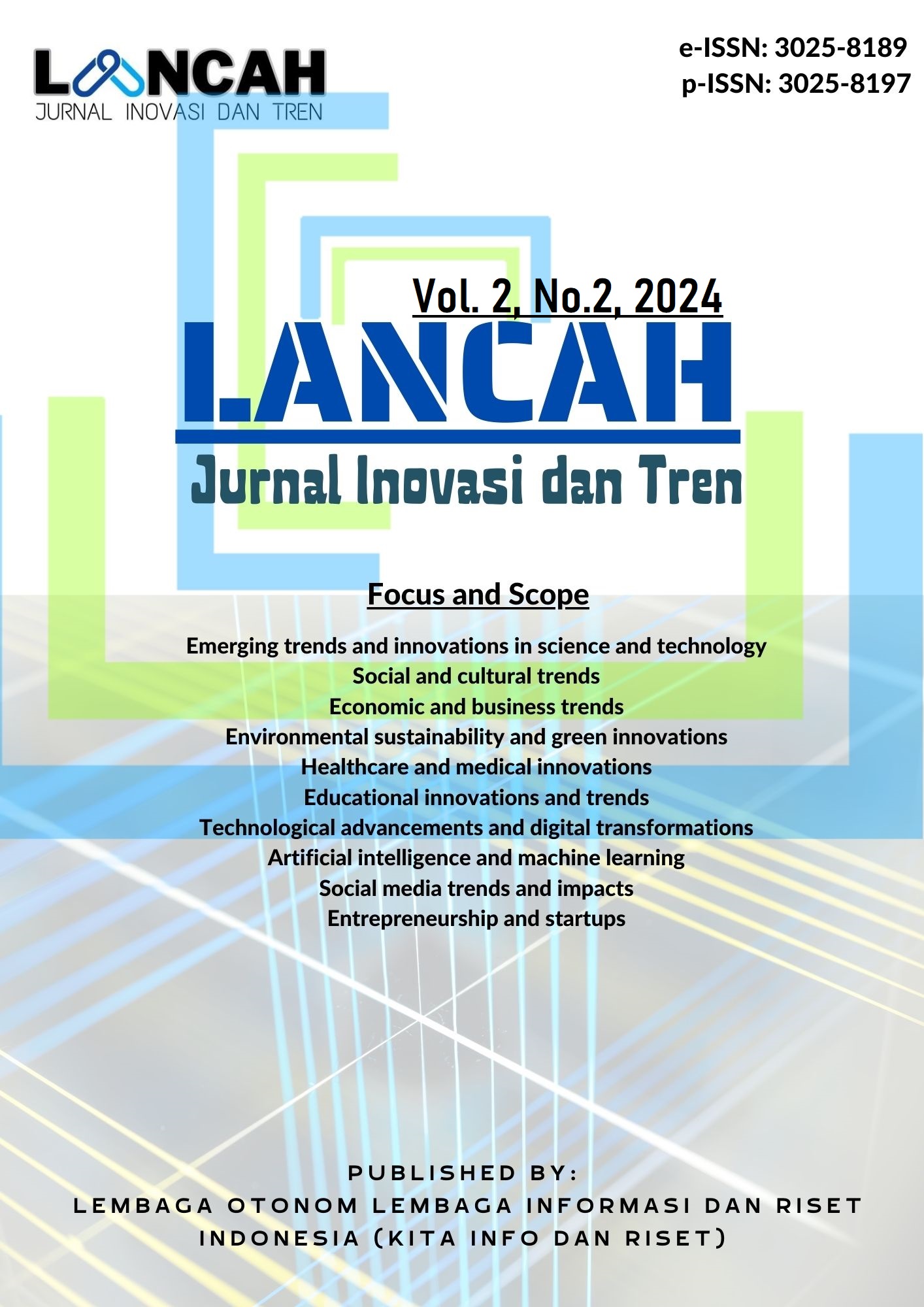Kemampuan Pembuktian Matematika Mahasiswa: Systematic Literature Review
DOI:
https://doi.org/10.35870/ljit.v2i2.2787Keywords:
Kemampuan, Pembuktian, MatematikaAbstract
The aim of this research is to find out how big students' mathematical proof abilities are. Recently, we can see that many students majoring in mathematics are experiencing difficulties in proving mathematics, whether solved directly or indirectly. This research uses a Systematic Literature Review taken from several journals published 2018-2023. The results of the research show that students' mathematical proof has not been achieved as a whole. Because some students do not know the basics of mathematical concepts, the proof steps cannot be completed correctly. However, some of the students who have high abilities can complete it correctly, it's just that the work is not done systematically.
Downloads
References
Afandi, A., & Angkotasan, N. (2021). Analisis Kemampuan Pembuktian Matematis Mahasiswa Melalui Pendekatan Deduktif pada Mata Kuliah Geometri. Jurnal Pendidikan Guru Matematika, 1(2).
Angraini, L. M., Sundawan, M. D., & Noto, M. S. (2019). Analisis proses berpikir menyusun bukti matematis mahasiswa calon guru pada mata kuliah struktur aljabar. Euclid, 6(2), 189-197.
Dewi, N. S., & Dasari, D. (2023). Systematic literature review: kemampuan pembuktian matematis. Jurnal Cendekia: Jurnal Pendidikan Matematika, 7(1), 240-254.
Erawati, N. K., & Purwati, N. K. R. (2020). Kemampuan Pembuktian Matematika Berdasarkan Gender Dan Gaya Belajar. Prima: Jurnal Pendidikan Matematika, 4(2), 109-120.
Firmasari, S., & Sulaiman, H. (2019). Kemampuan pembuktian matematis mahasiswa menggunakan induksi matematika. Journal of Medives: Journal of Mathematics Education IKIP Veteran Semarang, 3(1), 1-9.
Fitriani, F., & Siahaan, M. M. L. (2022). Deskripsi kemampuan pembuktian langsung mahasiswa pada matakuliah analisis variabel riil. RANGE: Jurnal Pendidikan Matematika, 4(1), 112-121.
Hidayati, D. W., & Wahyuni, A. (2020). Analisis kemampuan pembuktian matematis parabola menggunakan guided learning berdasarkan tingkat resiliensi. Jurnal Inovasi Pendidikan Matematika (JIPM), 2(2), 121-130.
Khusna, H., & Miatun, A. (2024). Self Regulated Learning sebagai Prediktor Kemampuan Pembuktian Matematis Calon Guru Matematika. FIBONACCI: Jurnal Pendidikan Matematika dan Matematika, 9(2), 131-140.
Mashuri, S. (2019). Media Pembelajaran Matematika. Jakarta:Deepublish
Matitaputty, C. (2020). Persepsi mahasiswa dalam memvalidasi bukti matematis. Jurnal Magister Pendidikan Matematika (JUMADIKA), 2(2), 60-65.
Mujib, A. (2019). Kesulitan mahasiswa dalam pembuktian matematis: Problem matematika diskrit. Jurnal MathEducation Nusantara, 2(1), 51-57.
Multahadah, C. (2022). Kemampuan pembuktian matematis mahasiswa matematika pada mata kuliah teori bilangan. Jurnal Gamma-Pi, 4(01), 36-40.
Nuraeni, F. (2020). Kemampuam-Kemampuan Matematis dan Pengembangan Instrumennya. Jawa Barat: UPI Sumedang Press
Santosa, C. A. H. (2013). Mengatasi kesulitan mahasiswa ketika melakukan pembuktian matematis formal. Jurnal Pengajaran MIPA, 18(2), 152-160.
Pratiwi, A., Saipudin, E. A., Hotimah, N., Maulidah, S., & Yuliyani. (2024). Analisis dalam Merancang Konsep Ekonomi Kebijakan: kebijakan Ekonomi. MISTER: Journal of Multidisciplinary Inquiry in Science, Technology and Educational Research, 1(2), 179–183. https://doi.org/10.32672/mister.v1i2.1306
Sufriadi, D. (2018). Analisis transformasi struktural perekonomian Aceh. EKOMBIS: JURNAL FAKULTAS EKONOMI, 3(2).
Downloads
Published
Issue
Section
License
Copyright (c) 2024 Putri Wardani, Rusi Ulfa Hasanah, Muhammad Rifa’i

This work is licensed under a Creative Commons Attribution-NonCommercial-ShareAlike 4.0 International License.
Copyright and Licensing Agreement
Authors who publish with this journal agree to the following terms:
1. Copyright Retention and Open Access License
- Authors retain full copyright of their work
- Authors grant the journal right of first publication under the Creative Commons Attribution 4.0 International License (CC BY 4.0)
- This license allows unrestricted use, distribution, and reproduction in any medium, provided the original work is properly cited
2. Rights Granted Under CC BY 4.0
Under this license, readers are free to:
- Share — copy and redistribute the material in any medium or format
- Adapt — remix, transform, and build upon the material for any purpose, including commercial use
- No additional restrictions — the licensor cannot revoke these freedoms as long as license terms are followed
3. Attribution Requirements
All uses must include:
- Proper citation of the original work
- Link to the Creative Commons license
- Indication if changes were made to the original work
- No suggestion that the licensor endorses the user or their use
4. Additional Distribution Rights
Authors may:
- Deposit the published version in institutional repositories
- Share through academic social networks
- Include in books, monographs, or other publications
- Post on personal or institutional websites
Requirement: All additional distributions must maintain the CC BY 4.0 license and proper attribution.
5. Self-Archiving and Pre-Print Sharing
Authors are encouraged to:
- Share pre-prints and post-prints online
- Deposit in subject-specific repositories (e.g., arXiv, bioRxiv)
- Engage in scholarly communication throughout the publication process
6. Open Access Commitment
This journal provides immediate open access to all content, supporting the global exchange of knowledge without financial, legal, or technical barriers.











